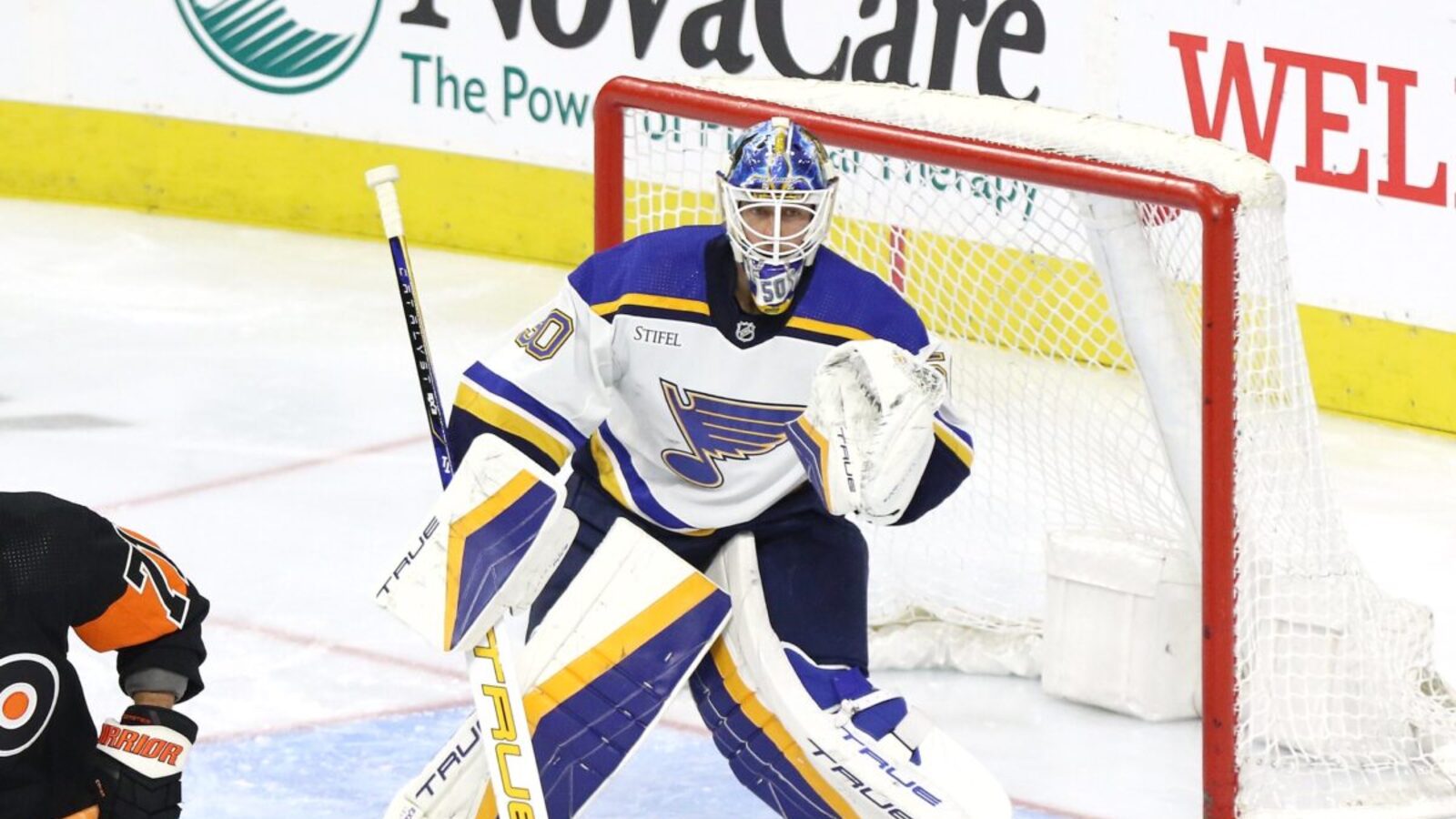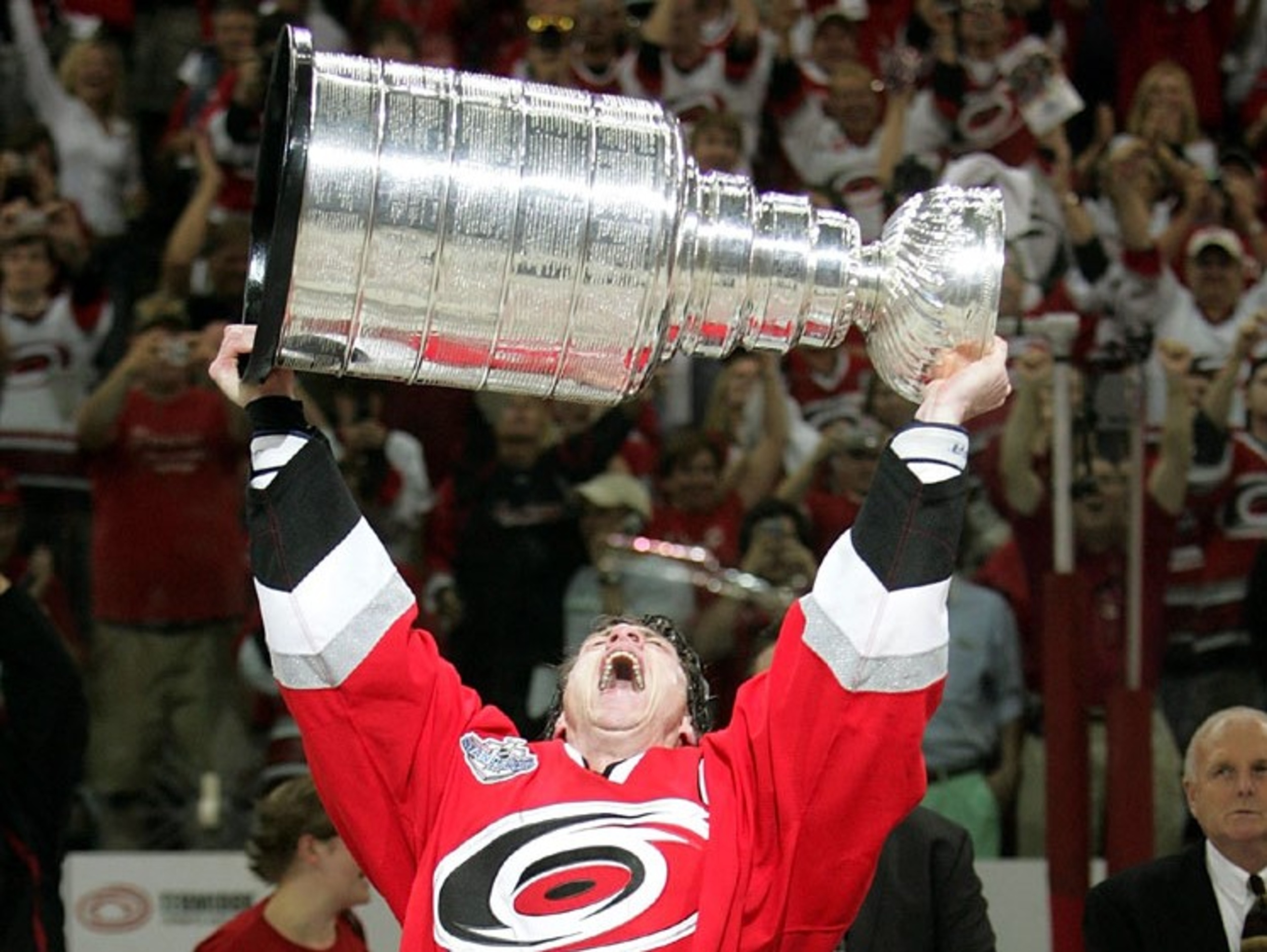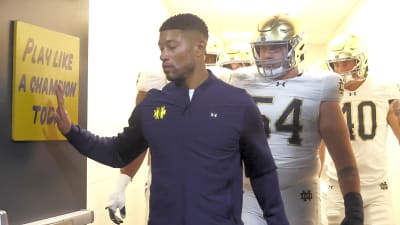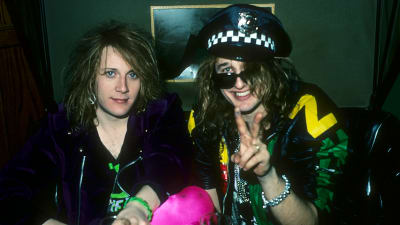
When we look at the Carolina Hurricanes, new fans see a thriving southern hockey market. However, older fans remember them as the transplants of the iconic Hartford Whalers. Starting from 1993, we can follow a single trade tree and figure out why the Whalers failed to succeed in Connecticut and why the Hurricanes won the Cup in 2006. It all starts with a young kid from Dryden, Ontario. It all starts with Chris Pronger.
Many don’t remember the Whalers drafting Pronger, but his career began in the Hartford Civic Center. Well, his NHL career began in Hartford, but his promising career in the junior leagues earned him the second overall pick in 1993. His career started in the Ontario Hockey League (OHL) with the Peterborough Petes, and his success in junior hockey made him such an attractive choice with the second-overall pick. If his time was less successful, who knows what would have happened?
Pronger’s Time in Peterborough
Pronger debuted with the Peterborough Petes in 1991-92. He played 63 games with the Petes, scoring 17 goals and 45 assists for 62 points. Is it worth noting that this is a defenseman? He was 16 and was a point-per-game player in junior hockey. The following season, he played in 61 games. That’s okay because he had 15 goals and 62 assists for 77 points as the Petes made the playoffs.
When the Petes made the OHL postseason, they played 21 games. During those games, Pronger scored 15 goals and 25 assists for 40 points to help lead the Petes to the OHL championship. This earned him a reputation as a strong playoff performer before he got to the NHL, and only increased his draft stock. Leading into the 1993 Draft, he was expected to be a top pick. He was such an outstanding prospect that the Whalers traded to get him. They moved from seventh overall to second, trading with the San Jose Sharks to get the Pronger pick.
Pronger’s Time in Hartford
Pronger made his NHL debut in the following season as an 18-year-old, and he looked right at home on the big stage. In his first season, he played 81 games and scored five goals and 25 assists for 30 points. It was good enough to get Pronger voted to the 1994-95 season All-Rookie Team. He played just 43 games the following season, but this season was cut short by a lockout. He had five goals and nine assists that season, and his value dropped.
Fans had questions about Pronger’s ability to endure the pressure of the NHL despite the Whalers finishing second-last in the East. So, with that, Pronger’s name started to hit the rumor mill. Teams from all across the league came calling, but the suitors that made the best offer were the St. Louis Blues. They offered a straight swap that the Whalers could not turn down.
Pronger’s Trade to St. Louis
It was a simple, one-for-one trade. The Blues got Pronger for Brendan Shanahan. Shanahan, currently the president of hockey operations in the Toronto Maple Leafs franchise, was a star then, and the Whalers thought they got drastically better with this deal. However, the Blues set themselves up for the long haul, which was clear when Pronger landed in the Gateway to the West.
Pronger’s first season with the Blues didn’t show what he would be yet. He only had seven goals and 25 assists, but with 110 penalty minutes, he added the defensive grit teams wanted at the time. It was a season mired in conflict, as the head coach and star players in St. Louis had a major falling out, which might have affected everyone in the room. When that situation was resolved going into the following season, Pronger showed the player we all remember.
Pronger scored 11 goals and 24 assists for 35 points, entering the Norris Trophy conversation for the first time in his career. He also added 143 penalty minutes, which helped endear him to the local fans in St. Louis. He was a menace for that team. In his 598-game career with the Blues, which spanned over nine seasons, Pronger scored 84 goals and 272 assists for 356 points and won the Norris Trophy as the best defenseman in the NHL.
Pronger’s Life After St. Louis
Coming out of the 2005 lockout, hockey had a new beginning. It was less about size and strength and more about speed and skill. Pronger had all of these assets, but the Blues began to look to the future without Pronger. He was traded out of St. Louis to the Edmonton Oilers for Eric Brewer, Doug Lynch, and Jeff Woywitka. If you want the Oilers’ side of this trade, it’s a branch of the Mark Messier trade tree, which has already been covered.
In Edmonton, Pronger played just one season. His wife didn’t like Northern Alberta’s cold climate, but he scored 12 goals and 44 assists for 56 points and helped lead the Oilers to the Stanley Cup Final. He was moved south, to the Anaheim Ducks, where he won the Stanley Cup in 2007. He spent a few years in Orange County before being traded to the NHL’s orange team, the Philadelphia Flyers. A scary eye injury truncated his playing career in Philly, but he was still a good defenseman, even at his age.
St. Louis’ Branch
So, to recap, the Blues acquired Brewer, Lynch, and Woywitka. Woywitka is the easiest to start with. He played for four seasons in St. Louis, scoring six goals and 29 assists for 35 points in 153 games. He wasn’t traded, so that branch is nice and short. Lynch never played for the Blues, and he wasn’t traded out of St. Louis either, leaving just one asset.
Brewer’s branch isn’t as short. He played for six years in St. Louis, scoring 30 goals and 65 assists for 95 points in 332 games. He was eventually traded out of St. Louis for the rights to Brock Buekeboom, who never made the NHL, and a 2011 third-round pick. Picks are magic beans, so you cannot blame the team that traded them if they become a significant asset. However, the Blues won’t care because they hit on that pick. It was Jordan Binnington.

In 2011, the Blues drafted a goaltender from Richmond Hill, Ontario, at 88th overall: Binnington from the Owen Sound Attack. He’s currently the Blues’ starting goaltender, so it’s working, but his legacy in St. Louis is already cemented. Binnington, the backstop to the 2019 Stanley Cup champion Blues, was the reason they went from worst to first. He might have his unstable moments, but he’s been a great Blue. When he’s not trying to start fights, lay hits, and create mayhem, he’s a good goaltender. With that, the Blues branch is still active. What about the Hartford side?
Hartford’s Branch
Shanahan was a star when he moved from St. Louis to Connecticut. He played like it for the Whale. In 1995-96, he played 74 games, but had 44 goals and 34 assists for 78 points. This was during the height of the dead-puck era, so scoring was at a premium. It was the first season after the New Jersey Devils put offense into hibernation. These were incredible stats at the time, especially for Hartford, which needed a star. However, the fans weren’t coming, and there was uncertainty about the team’s future.
Two years prior, two other teams that the NHL had taken in from the World Hockey Association were relocated. The Quebec Nordiques became the Colorado Avalanche, and the Winnipeg Jets became the Phoenix Coyotes. Hartford was under the same speculation, and Shanahan didn’t want this looming over him, so he requested a trade. He scored once in two games in 1996-97 for the Whalers. Then, he was traded to the Detroit Red Wings.
Shanahan and Brian Glynn were traded to the Red Wings for a 1997 first-round pick, Keith Primeau, and Paul Coffey. Some fans have seen Primeau’s name and know where this is going, but we will get there later. For now, let’s start with the pick. The Hurricanes (yes, they had relocated by that point, so it isn’t the Whalers anymore) drafted Nikos Tselios. He’s Chris Chelios’ cousin and had two NHL games with the Hurricanes. That’s about as good as it got for him.
Paul Coffey’s Branch
We’ll go to Coffey next. He’s the third Hockey Hall of Fame member in this tree. He was traded out of Detroit because he had a strained relationship with head coach Scotty Bowman, who went on to win back-to-back Stanley Cups in the Motor City. On the other hand, Coffey only played in 20 games for the Whalers, scoring three goals and five assists for eight points. He didn’t stay for more than that, as he was dealt to the Tampa Bay Lightning for a 1997 first-round pick, a 1997 seventh-round pick, and Kevin Haller.
Haller played 35 games with the Whalers, scoring twice and helping to set up six more. After relocation, he played 65 with Carolina, with three goals and five assists in 65 games. He was then traded to the Mighty Ducks of Anaheim with Stu Grimson for Dave Karpa and a 2000 fourth-round pick. Karpa played three years with Carolina, scoring five goals and 12 assists for 17 points in 140 games. He wasn’t traded, so that’s simple. As for the fourth-round pick, the Canes traded up to the first pick of the round to grab a player they liked.
That was defenseman Niclas Wallin. The secret weapon was a fan favorite in Carolina. He only had three playoff goals, but all were overtime winners for the Hurricanes. He played in nine seasons for Carolina, scoring 18 goals and 51 assists for 69 points, but all of that is overshadowed by the Stanley Cup he won in 2006. He’s not remembered for his points or his defensive issues. He’s remembered for his clutch goals and his name etched in history. He was traded in 2010 to the Sharks with a 2010 fifth-round pick for a 2010 second-round pick. That was used on Mark Alt. He never played for the Canes, but was traded with Brian Boucher to the Flyers for Luke Pither. He never made the NHL.
So, back to the Coffey trade. We still have the 1997 first-round pick and the 1997 seventh-round pick. The seventh-round pick was the Canes re-acquiring their pick after the Whalers acquired Kevin Dineen. They drafted Andrew Merrick with that pick, but he never made the NHL. That leaves us with the other first-round pick. Carolina traded out of the first round with San Jose. The pick became Scott Hannan, which is cool, but not relevant. Carolina got a 1997 second-round pick and a 1998 third-round pick.
The second-round pick was used on Brad Defauw. He played nine NHL games and scored three goals, but never returned to the show, in Carolina or anywhere else. However, the 1998 third-round pick the Hurricanes got was used on another player that Canes fans will remember. At 71st overall in 1998, the Hurricanes selected Erik Cole. Cole had two spells in Carolina, due to a pit stop in Edmonton. He scored 168 goals and 195 assists for 363 points in 557 games with Carolina over nine years. He won the Cup in 2006, too.
Cole’s Trades
Cole’s departure from Carolina was simple—a one-for-one trade with the Oilers. Cole was sent to Alberta for Finnish defenseman Joni Pitkanen. Pitkanen himself has a place in Hurricanes history, as he was part of that 2009 team that wandered into the playoffs and found itself in the conference finals before they recognized what was happening. Across five seasons with the Hurricanes, Pitkanen played 266 games, scoring 24 goals and 116 assists for 140 points.
Ultimately, Piktanen’s time in Carolina and playing career were cut short when he was injured while touching the puck up for icing. A simple play saw Karl Alzner dump the puck in deep, and Troy Brouwer did what he was supposed to and raced Pitkanen back. Unfortunately, the collision between them broke Pitkanen’s heel, an extremely rare injury in hockey because it takes so much force to break the heel. It ended Pitkanen’s career. It was the most impactful injury in the NHL’s adaptation of hybrid icings, but players are safer today because of it.
Keith Primeau’s Branch
The final hanging branch of Shanahan’s trade to Detroit is Primeau. He played three seasons in Carolina, scoring 82 goals and 94 assists for 176 points in 234 games. However, he was traded out of Raleigh. He was traded to the Flyers with a 2000 fifth-round pick for Jean-Marc Pelletier, a 2000 second-round pick, and a player that will remain unnamed for now.
Pelletier never played for the Canes, but he was traded. He was sent to the Coyotes along with a 2003 conditional pick, which never had its conditions met for goalie Patrick DesRochers. DesRochers had a 1-1 record in his two games in Carolina with a .901 save percentage (SV%) and a 2.41 goals-against average (GAA), but he wasn’t traded out of town, ending the Pelletier branch.
The Canes did not use the 2000 second-round pick. It was a throw-in to make a massive trade. They traded Nolan Pratt, a 2000 first-round pick, and a 2000 second-round pick to the Colorado Avalanche for a 2000 second-round pick and Sandis Ozolinsh. The second-round pick the Canes acquired was used on Tomas Kurka, who had three goals and two assists in his 17 games in the NHL with Carolina.
As for Ozolinsh, the Hurricanes liked him. He was a decent fit, but there were problems. While he was there, Carolina wasn’t exactly rolling in money. Of course, they currently have a wealthy owner, but it wasn’t the case with Peter Karmanos. He couldn’t afford to keep Ozolinsh around, so after his 118 games in Carolina, where he scored 16 goals and 51 assists for 67 points, he was traded to the Florida Panthers.
Ozolinsh was packaged with Byron Ritchie and sent to Florida for Kevyn Adams, Bret Hedican, Tomas Malec, and a 2003 conditional second-round pick. The conditions for the pick were never met, but the rest of these players had a substantial impact in Carolina. Starting with Tomas Malec, he played 43 games with Carolina and got just two assists. He was packaged with a 2004 third-round pick and traded to Anaheim for Martin Gerber.
Gerber was spectacular in 2006, helping the Hurricanes sparkle in the regular season. However, he was displaced in the postseason as Cam Ward’s emergence helped Carolina steady the ship en route to the Stanley Cup, where Ward won the Conn Smythe Trophy as playoff MVP. It meant that Gerber wasn’t needed after his one season in Carolina. He got into 60 games and posted a .906 SV% and a 2.78 GAA, but he was amazing that year. He wasn’t traded out of Carolina, ending that branch.
Another member of that 2006 championship roster was Kevyn Adams. Now the Buffalo Sabres’ general manager, Adams was one of the leaders for Carolina. He played five seasons in Carolina, scoring 38 goals and 34 assists for 72 points in 300 games. Adams was traded to the Coyotes for Dennis Seidenberg. Seidenberg played in three seasons with the Hurricanes, scoring five goals and 45 assists for 51 points in 137 games with Carolina. He left via free agency, though.
The final player of this branch is Bret Hedican. Another member of the 2006 Stanley Cup-winning roster, the Hurricanes found success with this defenseman. Hedican played six seasons in Carolina, scoring 19 goals and 82 assists for 101 points in 369 games. After departing the Canes, he ended his career in Anaheim, but it wasn’t through a trade. It means this branch ends.
The Unnamed Player
The final piece of this puzzle is the player who wasn’t named in the Primeau trade with the Flyers. The final piece of that Primeau trade was Rod Brind’Amour. The captain on that 2006 team and the current Hurricanes bench boss spent 10 years playing in Carolina. In 694 games, Brind’Amour scored 174 goals and 299 assists for 473 points. He won the Selke Trophy twice as the league’s best two-way forward in Carolina.

Brind’Amour retired in Carolina and became the coach he is today. He’s led the Hurricanes to seven straight playoff series and won a round in each series. Under his guidance, the Hurricanes have become a staple of playoff hockey. While they have struggled to get over the hump and lift the Cup, his presence has continued to improve their stature within the league.
Pronger Trade Tree Overall
This is a rare trade tree. It worked out for both franchises in the long run. While the great names departing Hartford in this trade doomed the franchise’s time in Connecticut, they could build a Stanley Cup contender from the pieces they got for Pronger in their new home. On the Blues’ side of this trade tree, they won the 2019 Stanley Cup with some of the pieces they got from Pronger after trading him.
This tree shows the birth of hockey in Carolina. The Hurricanes may not be in Raleigh today without Brind’Amour. They wouldn’t have that Stanley Cup banner hanging from the rafters in the Lenovo Center. St. Louis may not have its banner either without Binnington’s exploits. All this dates back to when one young player had a slow start to his NHL career. Hartford couldn’t have imagined what Pronger would become, or what would happen after they departed the American northeast.
More must-reads:
- Penguins' problems protecting leads reaches embarrassing new low
- Shedeur Sanders speaks honestly about uncertain Browns future
- The 'Most passing yards by an NFL rookie' quiz
Breaking News
Trending News
Customize Your Newsletter
 +
+
Get the latest news and rumors, customized to your favorite sports and teams. Emailed daily. Always free!








